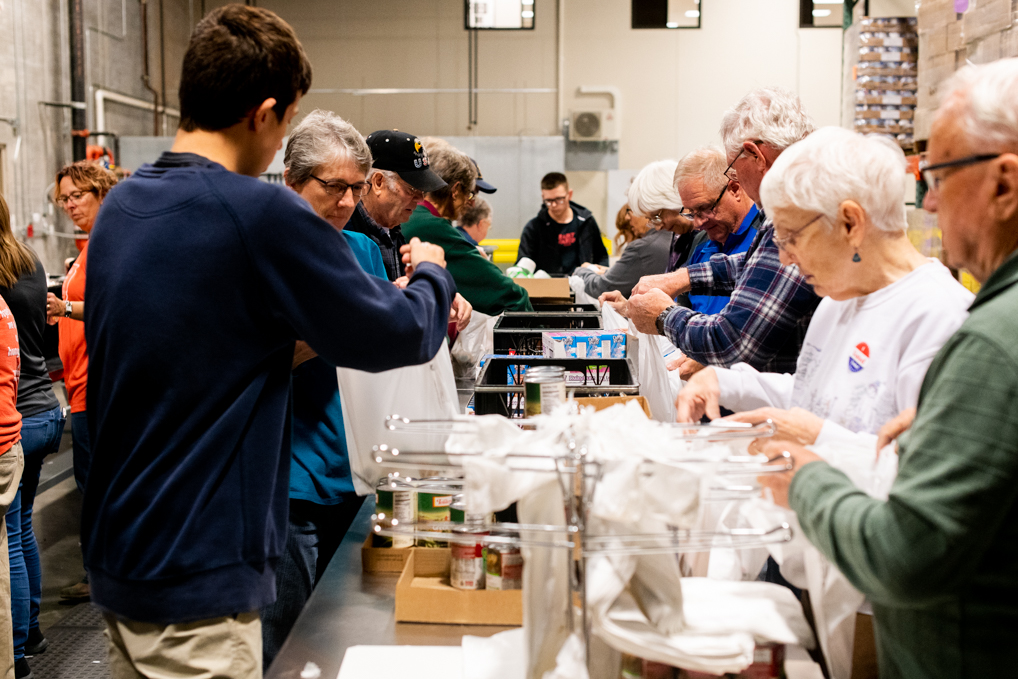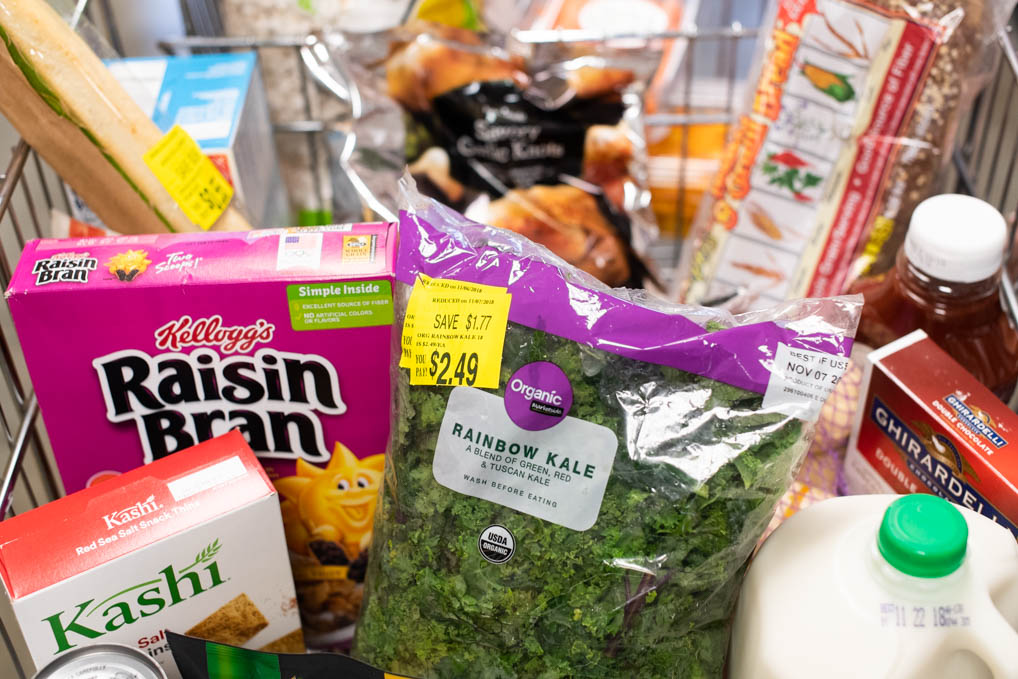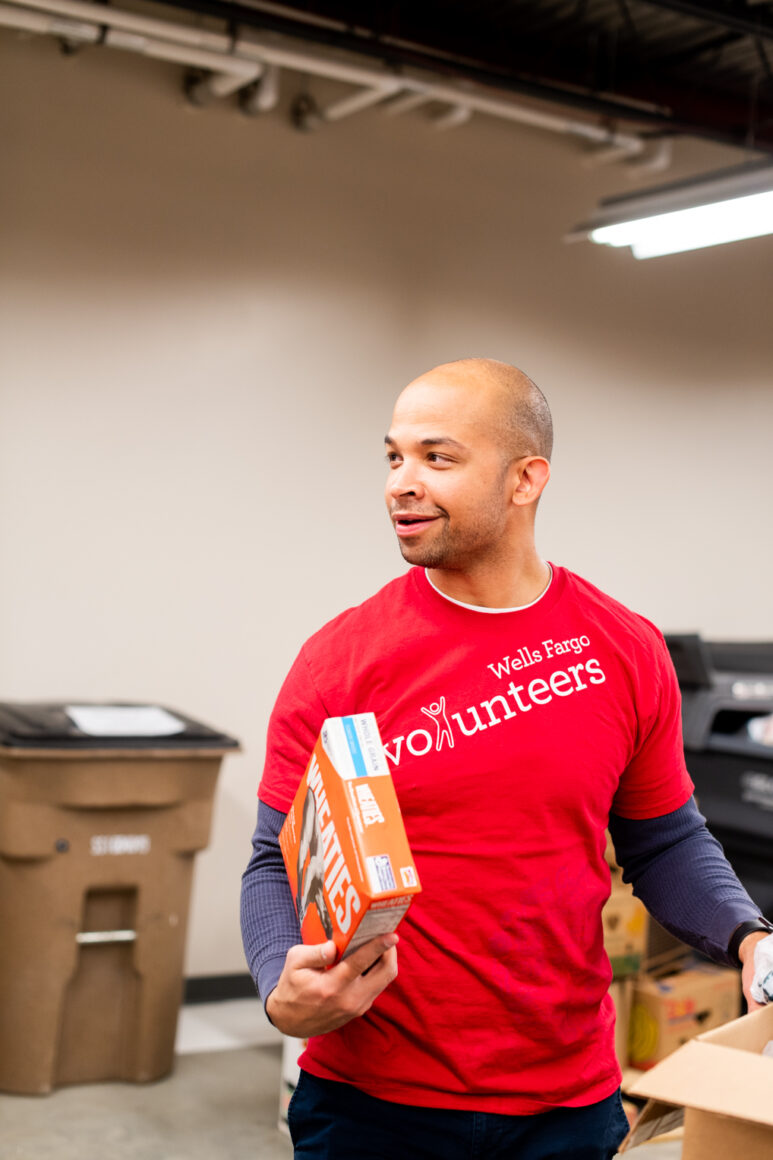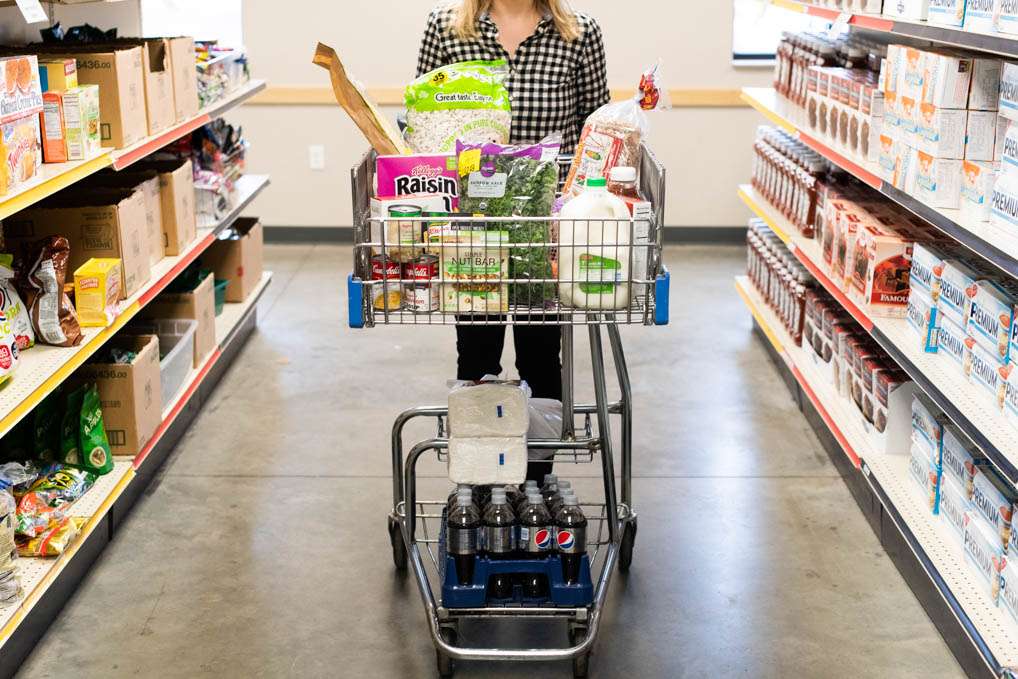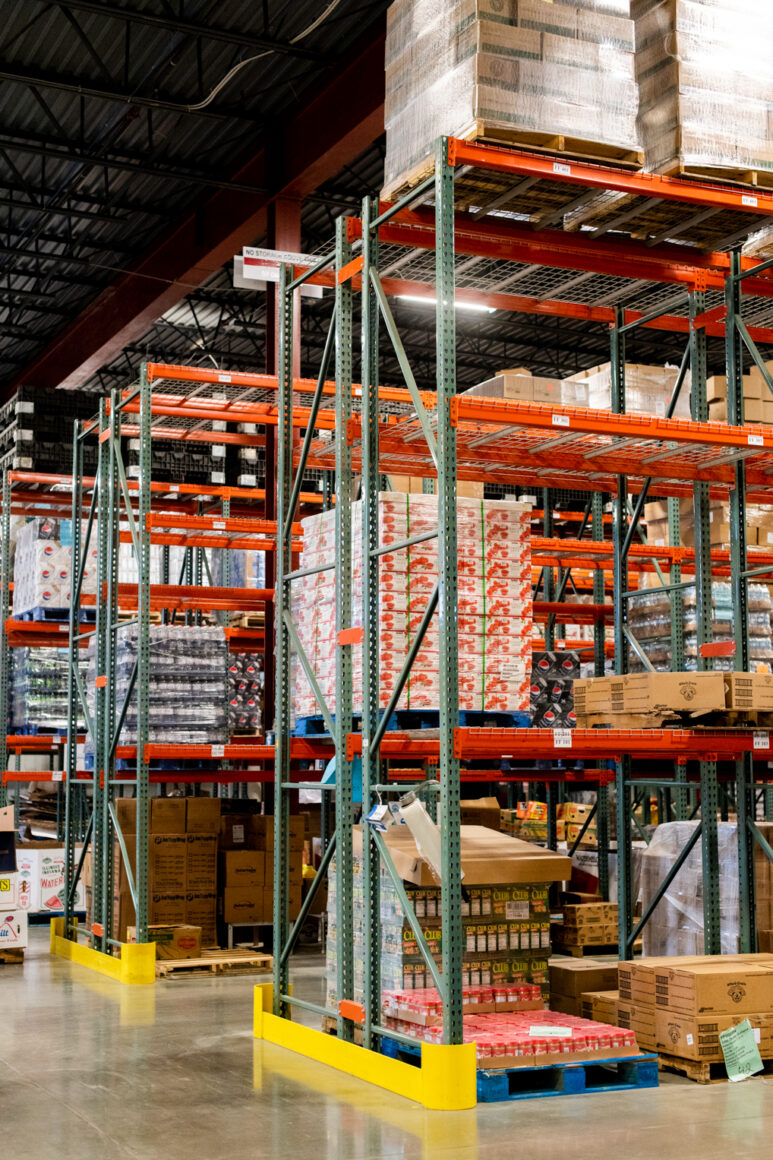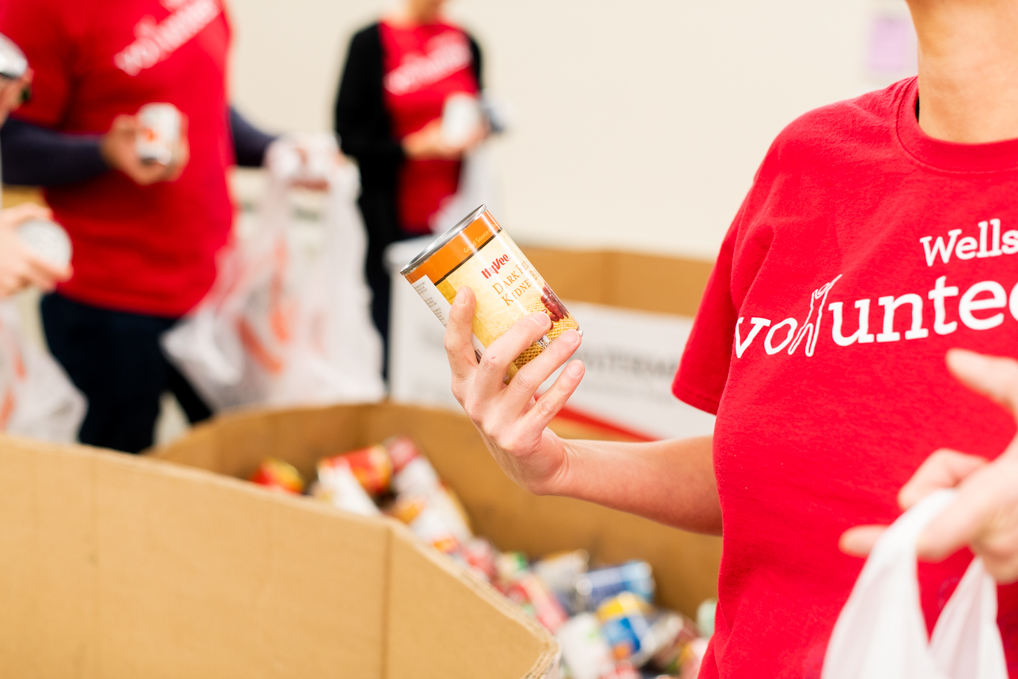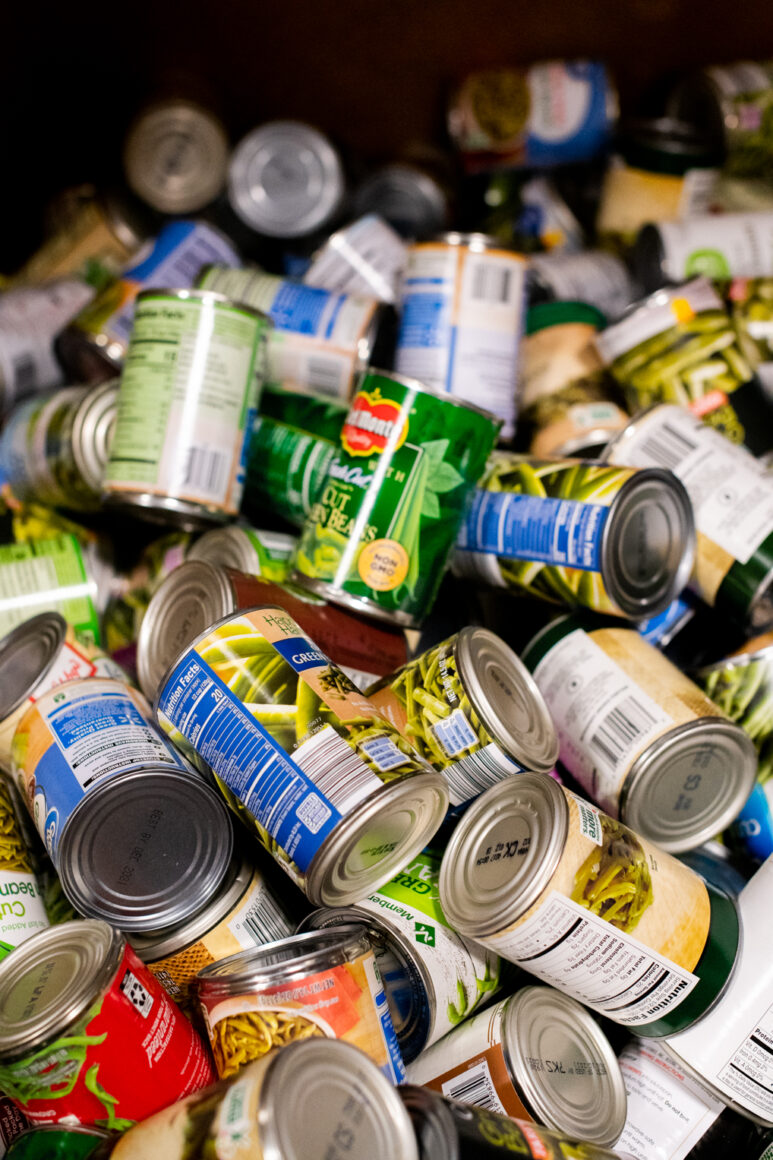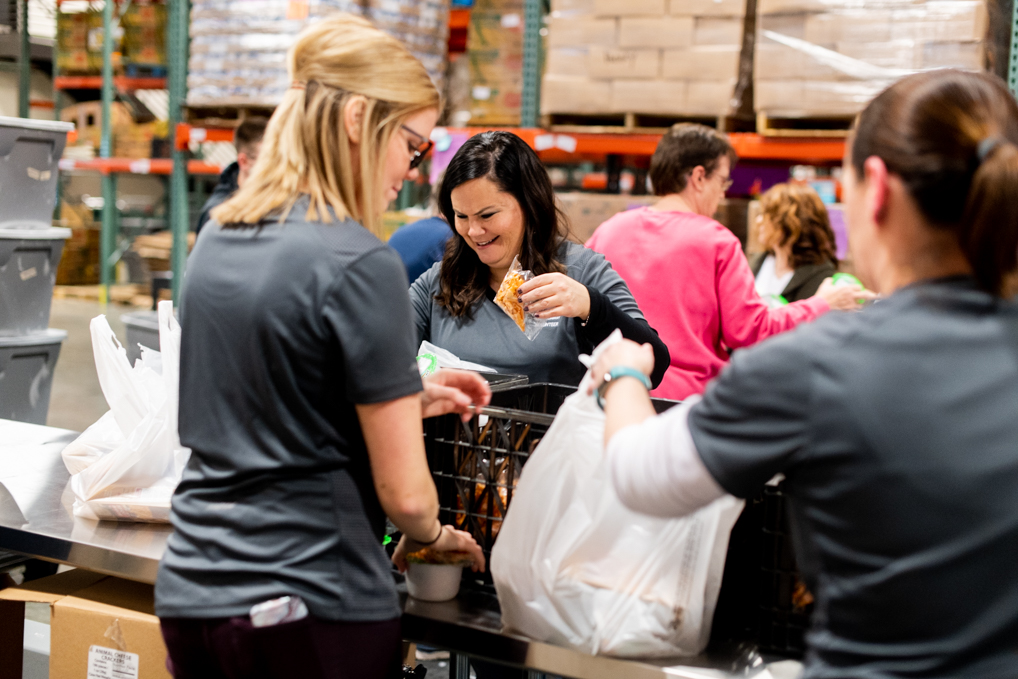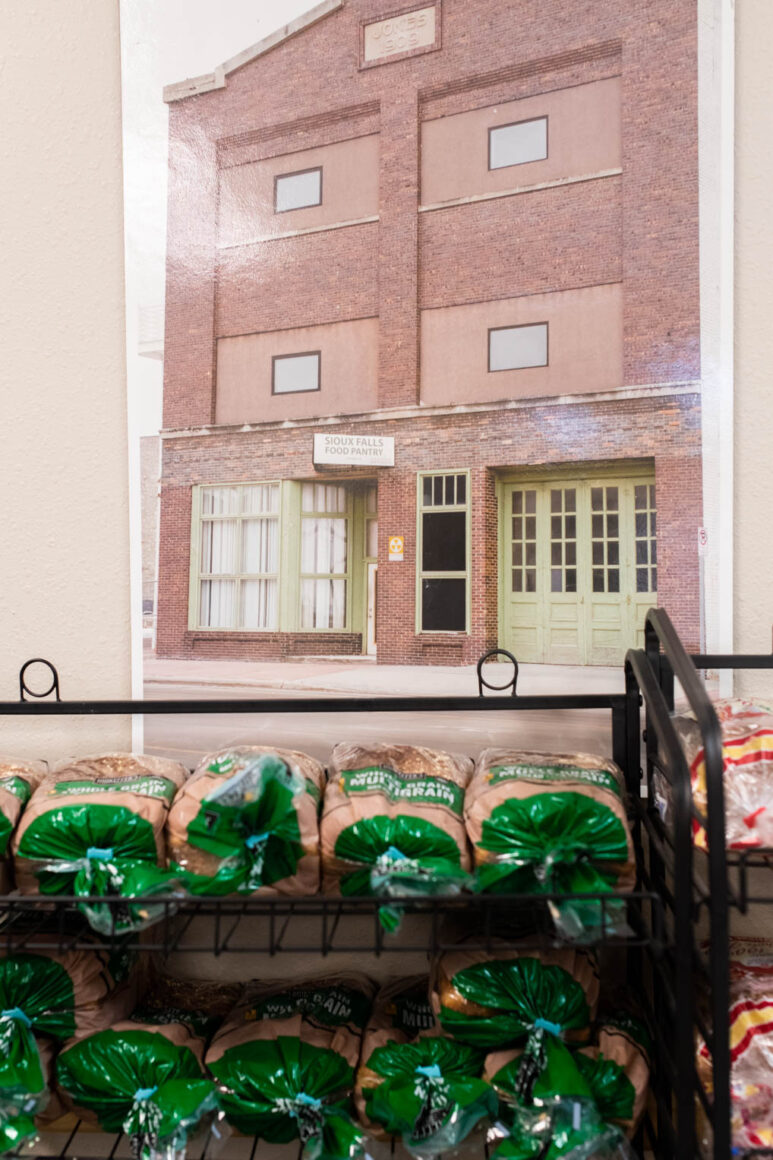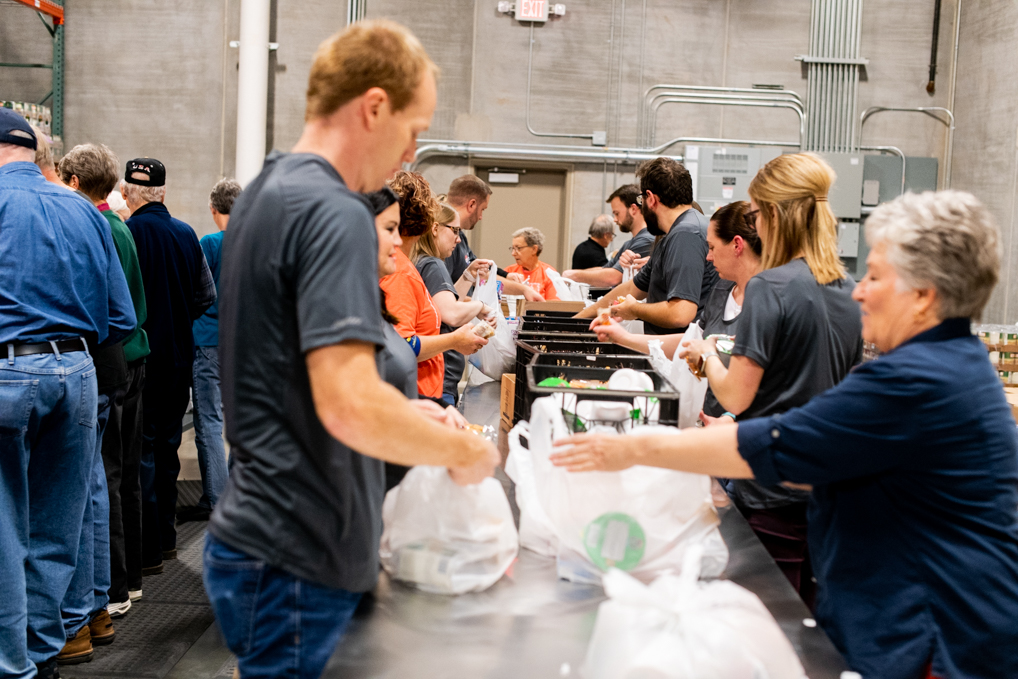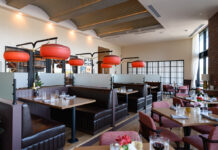When we think of concepts like poverty, starvation, and food insecurity, it can be easy to conjure images of gaunt-faced children in far-off places. We compartmentalize these words and images, because the idea that anyone could starve in 2018 is horrific and shameful—especially in our own communities. The idea that our next-door neighbor could be unsure where their next meal is coming from is incomprehensible—because that means it could happen to us, too.
The reality is one in nine South Dakotans–and one in six children
in South Dakota–live with food insecurity. They come from all walks of life. Each has unique circumstances, and often, they’re not the people we’d expect. That’s why Feeding South Dakota is taking a multi-front approach to its war on hunger–both geographically and operationally. Feeding South Dakota operates food pantries in Sioux Falls and Rapid City and food banks in Pierre, Sioux Falls, and Rapid City–plus three mobile food pantries dedicated to the eastern, central, and western portions of the state.
The organization is taking direct aim at childhood hunger with its BackPack Program, school food pantries, and summer snack programs. It’s also looking out for older South Dakotans, by distributing boxes of commodities to low-income senior citizens.
FOUR WAYS PRODUCTS ARE DATED
BEST IF USED BY (OR BEFORE)
THIS DATE IS RECOMMENDED FOR BEST FLAVOR OR QUALITY. IT IS NOT A PURCHASE OR SAFETY DATE.
CLOSED OR CODED DATES
THESE ARE PACKING NUMBERS USED BY THE MANUFACTURER.
SELL-BY
THIS DATE TELLS THE STORE HOW LONG TO DISPLAY THE PRODUCT FOR SALE. YOU SHOULD BUY THE PRODUCT BEFORE THIS DATE TO ENSURE MAXIMUM QUALITY.
USE-BY
THIS DATE IS THE LAST DATE RECOMMENDED FOR THE USE OF THE PRODUCT WHILE AT PEAK QUALITY. THE DATE HAS BEEN DETERMINED BY THE MANUFACTURER OF THE PRODUCT.
WHO BENEFITS
The Feeding South Dakota team thinks of the assistance they provide to their guests as a “hand up,” rather than a handout. They know that it’s hard for most people to ask for help, and they’ve gone to considerable effort to make the pantries and their waiting areas warm, inviting spaces for guests and their children. Likewise, the pantry shopping experience is designed to feel like a trip to any regular grocery store. Guests can choose the items their family will eat, including fresh foods like fruits and vegetables, dairy products and meat, in addition
to premade meals and significant amounts of bread and pastries. It’s a model that honors the dignity of guests, and leaves them with a sense that someone in their community has their back.
According to Jennifer Stensaas, Feeding South Dakota’s marketing and communications coordinator, many of the people who visit their pantries aren’t receiving government assistance of any kind. Day-in and day-out, they meet first-time visitors who are just trying to make it to their next paycheck. These guests aren’t eligible for government assistance, because their income is slightly higher than the threshold, and they’re among those who struggle most with food insecurity.
“THE MAJORITY OF THE PEOPLE WE’RE SERVING ARE WORKING POOR FAMILIES. THESE ARE PEOPLE THAT ARE MOST OFTEN WORKING HOURLY-PAY JOBS AND JUST NOT ABLE TO MAKE ENDS MEET.” – JENNIFER
“I think people are often surprised when we say the majority of the people we’re serving are working poor families,” said Stensaas. “These are people that are most often working hourly-pay jobs and just not able to make ends meet. Of course, there are some who have had that one tragedy that has put them in a place where they’re not able to provide for their families. That can be a car accident or being laid off from a job, and they just don’t have that savings built up to provide for the next three to six months. So a lot of the people that we see, they’re working–they’re just not able to make ends meet.”
One recent example Stensaas shares is about a local family in which the mother lost her full-time job, and decided to go back to school and pursue her bachelor’s degree. In addition to taking a full course load, she’s working part-time. Since paying for daycare is out of the question, her husband splits his time between caring for their children and his part-time job, but two part-time incomes don’t stretch far enough.
They’re both living with very limited income while she’s working to better the future for their entire family. So we’re here for them on a temporary basis for as long as they need us, until they can get themselves back up to a place of being stable.”
Feeding South Dakota isn’t in the business of feeding everyone every day, but rather, it serves as an important bridge during the toughest part of the month to get people to the next paycheck or SNAP installment. When visiting a pantry, a family typically leaves with 50-75 pounds of food, which shakes out to roughly five days of sustenance.
Guests can come once every 90 days, no questions asked. They just need to bring an ID and a piece of mail to confirm their address.
HUNGER BY THE NUMBERS
1 IN 9 SOUTH DAKOTANS LIVE WITH FOOD INSECURITY
13% OF SOUTH DAKOTANS LIVE BELOW THE POVERTY LINE
42% OF SOUTH DAKOTA SCHOOL CHILDREN QUALIFY FOR REDUCED
OR FREE MEALS
GIVING BACK
Feeding South Dakota has a small, dedicated staff, but volunteerism is the organization’s lifeblood. It takes an army to distribute food to all corners of a state so vast and rural, with so many food deserts. That means there are always opportunities to pitch in–including packing backpacks for children and boxes for seniors, filling bags of food at mobile food pantries and stocking pantry shelves.
For those without spare time to volunteer, remote philanthropy has never been easier. In addition to straight-forward fundraising websites like GoFundMe and Crowdrise, Facebook users now get a notification two weeks before their birthday, asking whether they’d like
to dedicate their special day to one of more than 750,000 organizations. This trend is particularly exciting for the Feeding South Dakota team, because long-standing partnerships with large retailers like Wal-Mart, Sam’s Club, and Costco mean they can make dollars stretch farther than members of the public can. For example, an individual could buy two boxes of cereal, and the organization could use the same amount to buy a dozen boxes.
While some prefer to do their part with a few clicks
of their mouse, others still enjoy the visceral experience of delivering boxes of food collected through old-fashioned food drives. For those who choose to go that route, Feeding South Dakota recommends calling to find out which items are most needed at that particular time. Some workplaces even do themed food drives, like the Sioux Falls Police Department’s recent peanut butter and jelly drive.
“EVERYBODY COULD BE ONE TRAGEDY AWAY FROM NEEDING FOOD ASSISTANCE. IT COULD BE YOUR NEXT-DOOR NEIGHBOR.” – JENNIFER
An increasing number of businesses, including Midco, Raven Industries, and Wells Fargo have ingrained giving back as part of their company culture. Groups from these and other organizations regularly volunteer as assembly line workers, filling thousands of backpacks and boxes each year–and many of the companies are giving their employees the time to do it.
“They use this often as a team building exercise,” said Stensaas. “What’s more fun than getting out of the office and talking with your team members–not talking about business, but getting to know your coworkers in an intimate setting outside of your everyday working life? They’re having fun and building stronger relationships. I think it makes them better employees when they get back to work.”
FEEDING SOUTH DAKOTA’S
ALWAYS-NEEDED ITEMS
Boxed Meals
Canned Fruits and Vegetables
Canned Meats
Cereal
Fresh Produce
Pasta
Peanut Butter & Jelly
Rice
RESPONSIBLE STEWARDSHIP
For those looking to donate to a local non-profit before the end of 2018, Stensaas hopes people will consider giving to Feeding South Dakota. As the state’s only food banking system, her team realizes the importance of their mission.
“I think what it boils down to is that our mission is so it’s such a basic need that can hit anyone at any time,” she said. “Everybody could be one tragedy away from needing food assistance. It could be your next-door neighbor.”
And, she emphasizes, the organization endeavors to be good stewards of its dollars through transparency and growing relationships with partner organizations aimed at making the biggest impact possible with those donations. Through strategic planning, Feeding South Dakota keeps its administrative costs low, enabling 95 cents out of every dollar to benefit programming expenses.
The war against hunger is an ongoing battle, and one that may never be fully won, but in the age of virtual fundraising and increased social consciousness, Stensaas knows that each donation of food, money or time chips away at the cycle of poverty in our state. And by taking a thoughtful approach to the guests’ experience, Feeding South Dakota is eroding the stigma of asking for a hand up, too.
To find out how you can help, visit feedingsouthdakota.org.



